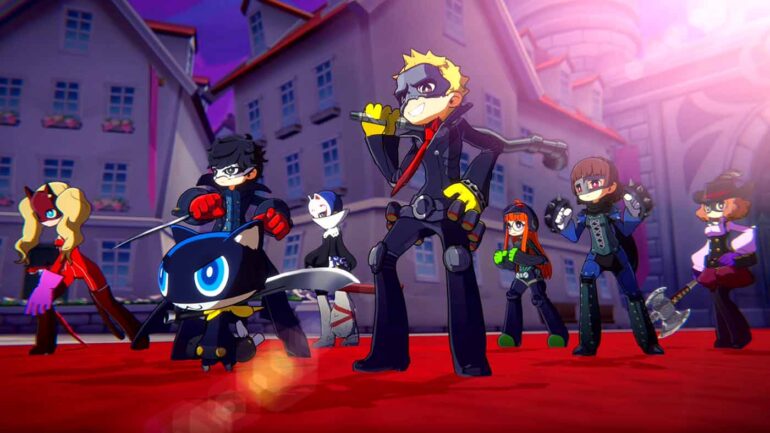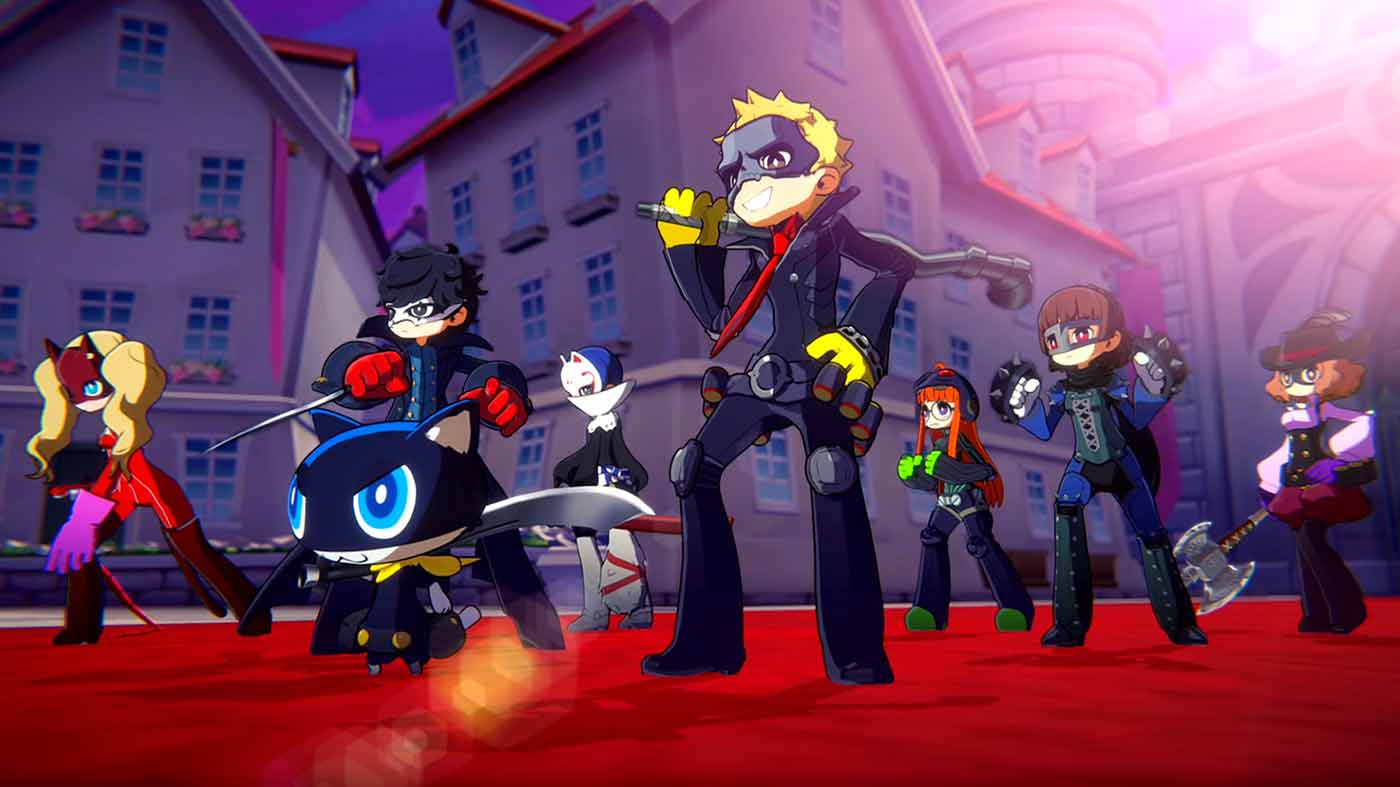Press Start may receive a commission when you buy from links on our site at no extra cost to you.
It should come as no surprise to anyone that the rampant success of Persona 5 has resulted in countless spin-offs. It didn’t feel that long ago that a bunch of Phantom Thieves-adjacent projects were leaked as fans wildly speculated as to what they could be. After the utterly sublime Persona 5 Royal, the catharsis of the Musou spin-off in Persona 5 Strikers, and an inevitable dancing game, Persona 5 Tactica is the next entry into the gilded halls of Persona 5.
Much like Strikers, Tactica marks a first for Persona. While Shin Megami Tensei has ventured into turn-based tactics before, we’ve yet to see the immensely popular spin-off series dip its toes into the same waters until now. The end result is an enjoyable Persona-flavoured tactics game that echoes the identity of Persona 5 despite a few stumbles and inconsistent pacing. Furthermore, it boasts another heartfelt story centered around new and returning characters that explores themes linked to those found in Persona 5 and its other spin-offs.
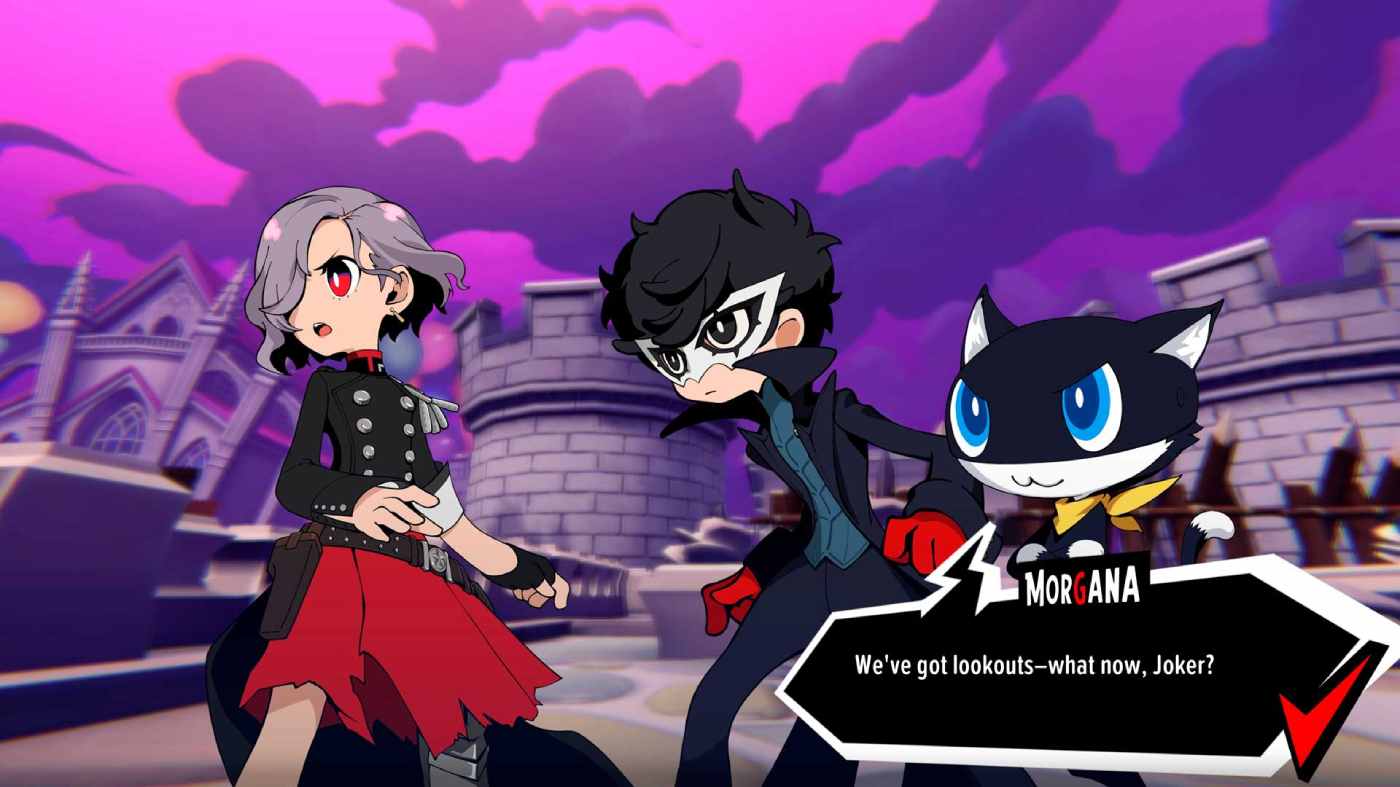
Instead of further muddying up the post-Persona 5 timeline, Tactica takes place during the events of the original game, where the Phantom Thieves are suddenly whisked away from Café LeBlanc into the Metaverse. Instead of finding themselves in a Palace, they quickly discover that they’re in a different Metaverse construct called a Kingdom. After making contact with a freedom fighter group called the Rebel Corps and its leader Erina, the Phantom Thieves promise to help her stage a coup and free the Kingdom from the authoritarian rule of an enemy faction called the Legionnaires and their leader, Marie.
[presto_player id=150280]
Feel more with PS5. Beyond the everyday. Beyond extraordinary. Even beyond imagination. Feel it now.
The Phantom Thieves aren’t the only ones pulled into this alternate world, as young National Diet member Toshiro Kasukabe is found kidnapped and imprisoned within Marie’s castle. Toshiro, Erina, and the Kingdom everyone finds themselves in lie at the core of Tactica’s story. While the early hours struggle to get you to buy into the premise and stakes of what’s going on here, the narrative really picks up steam at about the one third mark. It eventuates in powerful emotional moments and strong character development that feels right in line with Persona 5’s core ideas without feeling like its retreading familiar ground.
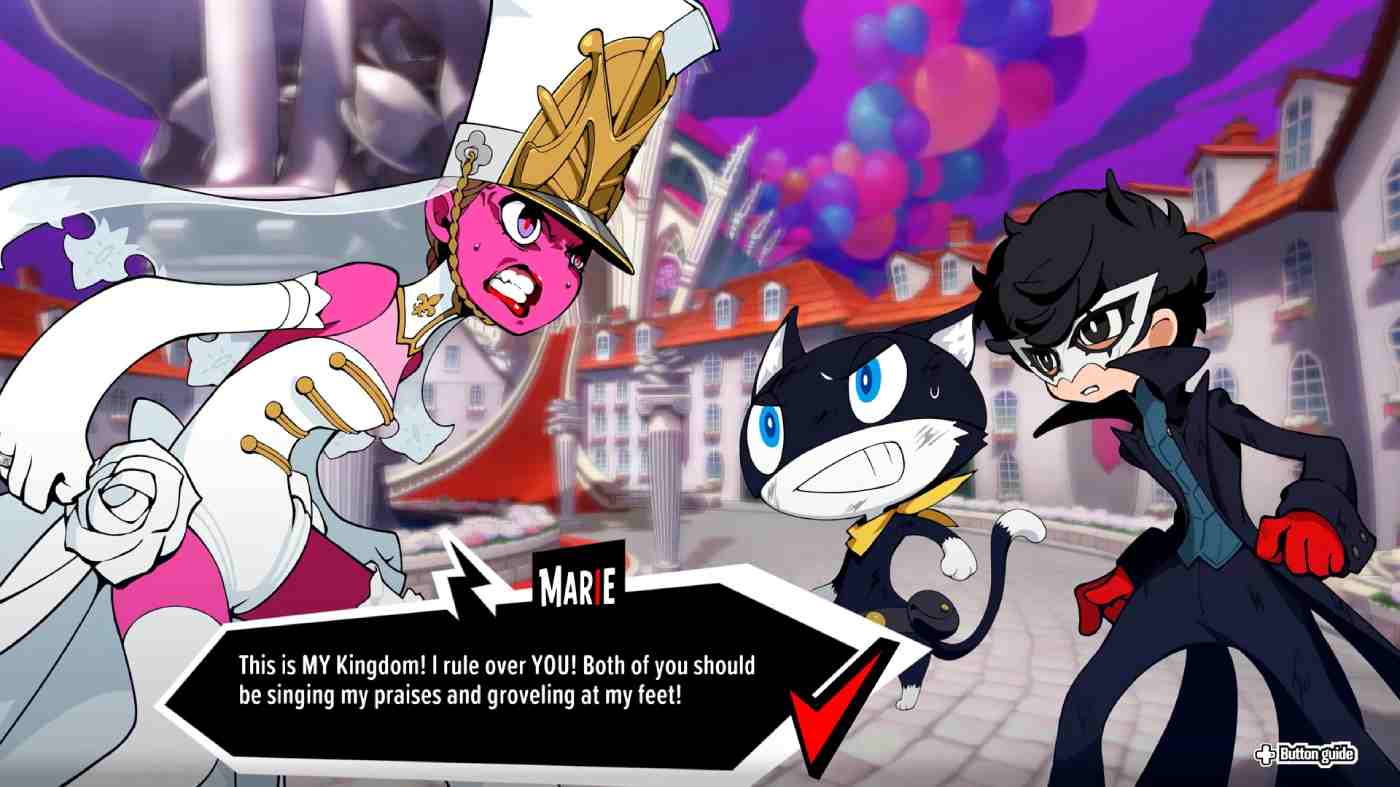
Even though you could argue that god-slaying is ubiquitous in Persona, the need to tie Tactica’s broader narrative into a greater threat feels off in the context of the story. Without spoiling too much, Tactica’s strengths lie in the exploration of its characters and their mental states. What it means to rebel, stand up for what’s right, and the cost of fighting against the injustices that plague our world. These poignant and contemporary themes that Persona always has an understanding of feel a bit undermined by the ham-fisted inclusion of divine entities.
In terms of gameplay, Persona 5 Tactica mostly delivers on a turn-based tactics experience with a Persona-style framework. You’ll engage in battles with a party of three Phantom Thieves, each one bringing different strengths and weaknesses to the fight. While someone like Haru has short movement range in comparison to the rest of the party, she more than makes up for it with her area-of-effect grenade launcher and the ability to lure enemies in with her psychic skills. Ann on the other hand is capable of dealing big single-target damage while lacking the same oomph in her gun attacks.
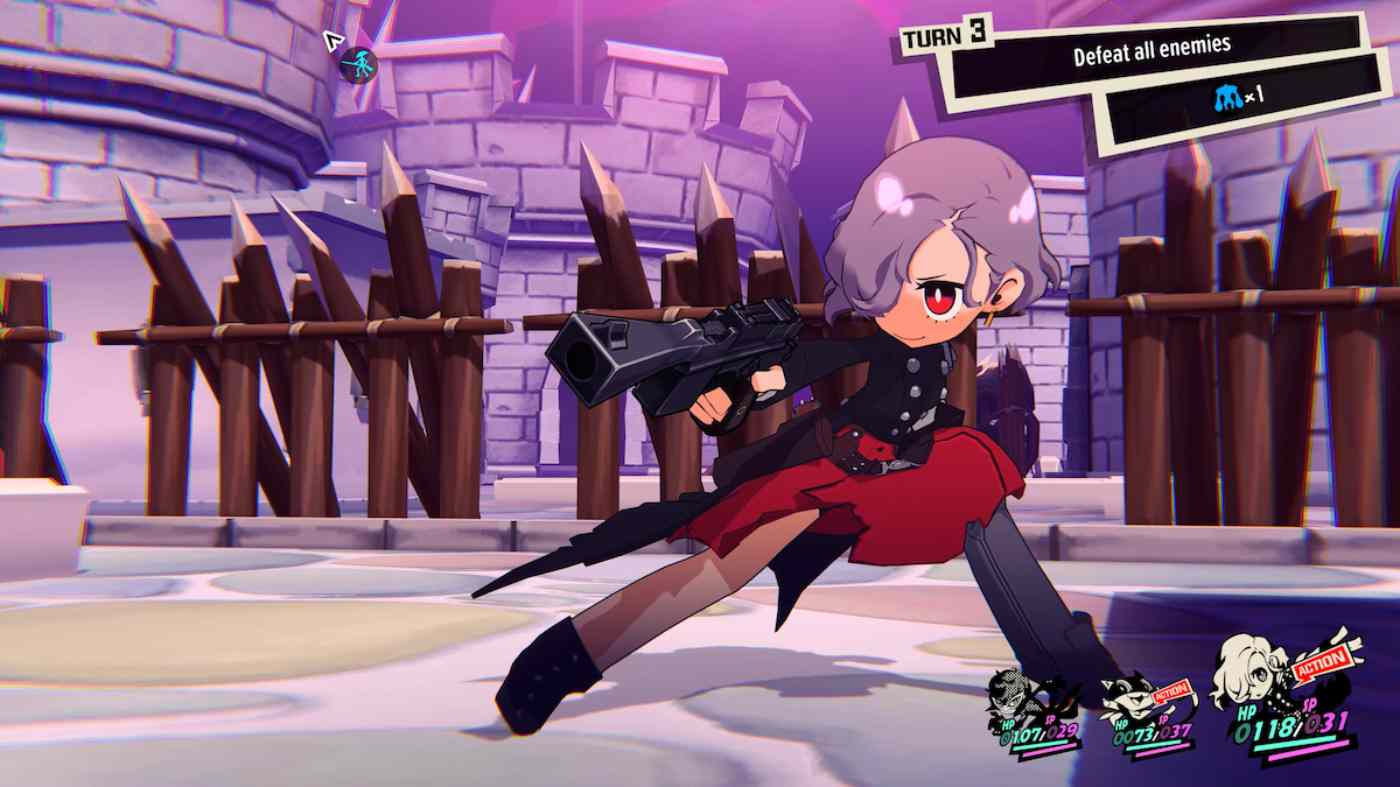
The different applications of skills, map design, and enemy arrangement all encourage you to think about who you bring with you on any given mission. Party-wide progression always means that no one gets left behind, which is nice when you want to change up your strategy if something isn’t working for you.
There are a couple options afforded to you in combat that make for quite a degree of player choice and expression on the whole. Aside from standard melee and ranged attacks, you also have Skills, where you can spend a chunk of SP on an elemental or support skill to inflict ailments or buff your party. You can even choose not to use a combat action, causing your units to enter a charged state for the next turn, netting you worthwhile buffs that put you in a more advantageous position. All of your decisions are made in an effort to knock down enemies, which is right on-brand for Persona.
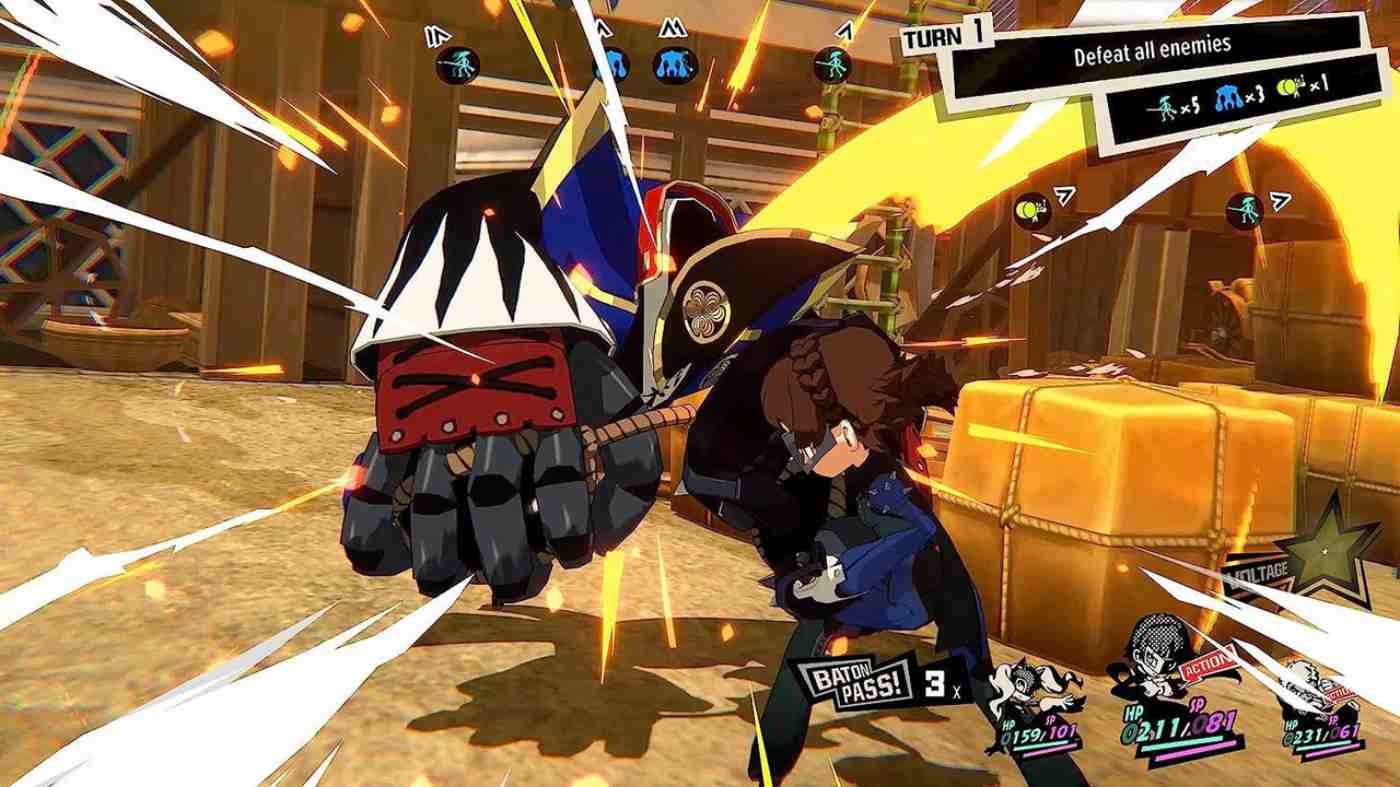
Knockdowns are what Persona 5 Tactica’s battle system is almost entirely structured around. When an enemy isn’t in cover, or is knocked out of it by a Skill, the next attack they take will knock them down. Knocking down is two-fold in Tactica, not only does it incapacitate the enemy for the rest of your turn, it also grants you a One More, allowing you to act with that character again. It’s through the smart use of the One More system and understanding how you can chain turns together that you’ll find success in Tactica’s battles.
AMAZON HAS THE CHEAPEST SHIPPED COPY AT $79 WITH FREE DELIVERY
These knockdowns can also lead to All-Out Attacks, where you create a triangular area-of-effect based on the positioning of your units. If you get familiar with this system and its intricacies, Persona 5 Tactica can be made quite easy on its baseline difficulty level. Smart party positioning can lead to All-Out Attacks that almost wipe the map clean of enemies, and keeping your own units in cover mitigates much more damage than it probably should. Coupled with the powerful and practical unique skills each party member brings to the table, Tactica rarely challenged me outside of its last few missions.
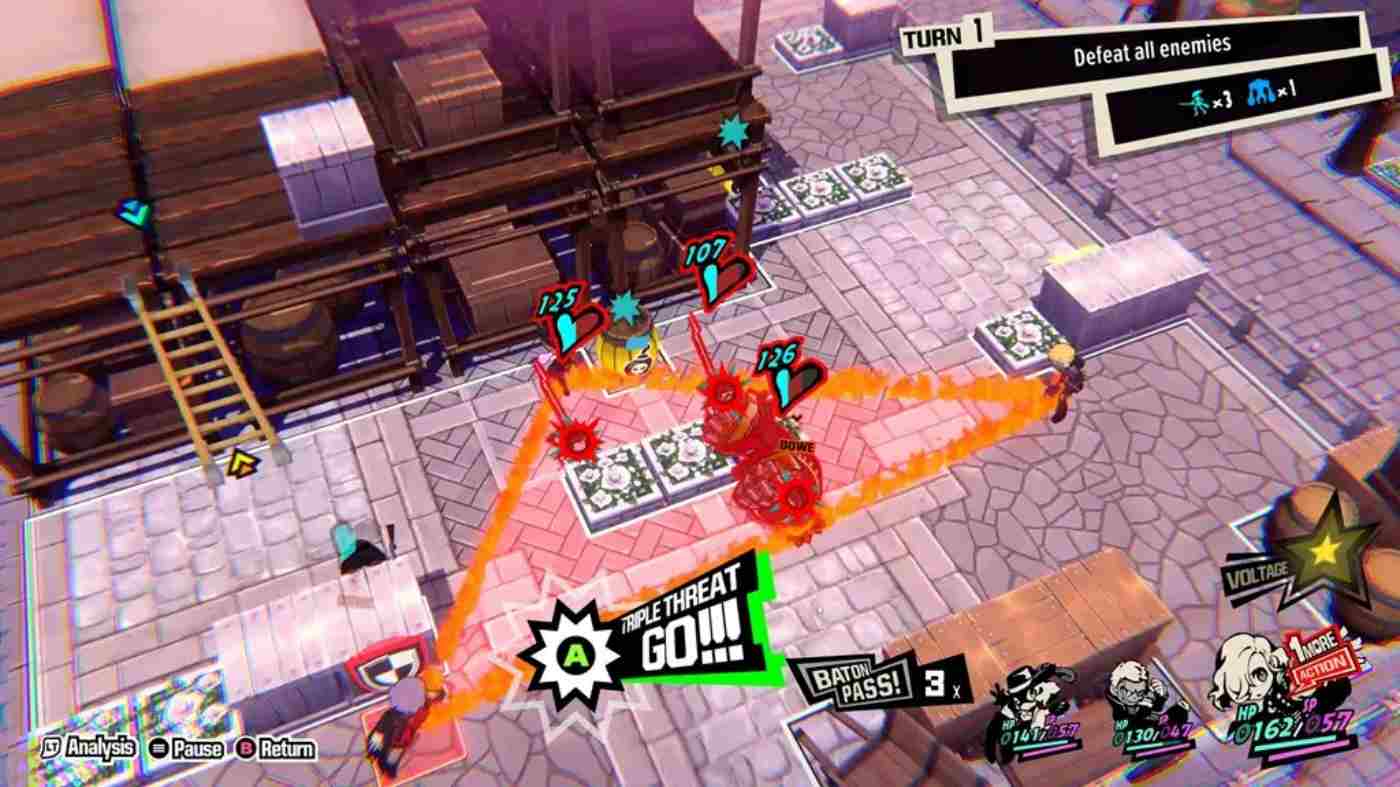
A lot of the way Tactica keeps you engaged in its combat system is through its enemy types. Each one has something consider when making a move on them. Teleporter type enemies, for example, will swap places with any unit that attacks them while not knocked down, which can lead to potentially disadvantageous situations if you deal with them haphazardly. Revenger type enemies will counter the first attack made against them in a turn, encouraging you to make use of your ranged tools before moving in to down them with another character.
Boss fights on the other hand are a bit of a mixed bag. The first sets a high bar going forward that none of the subsequent ones ever live up to. None of them are particularly bad, but the later ones feel somewhat under-designed, especially given their narrative significance.
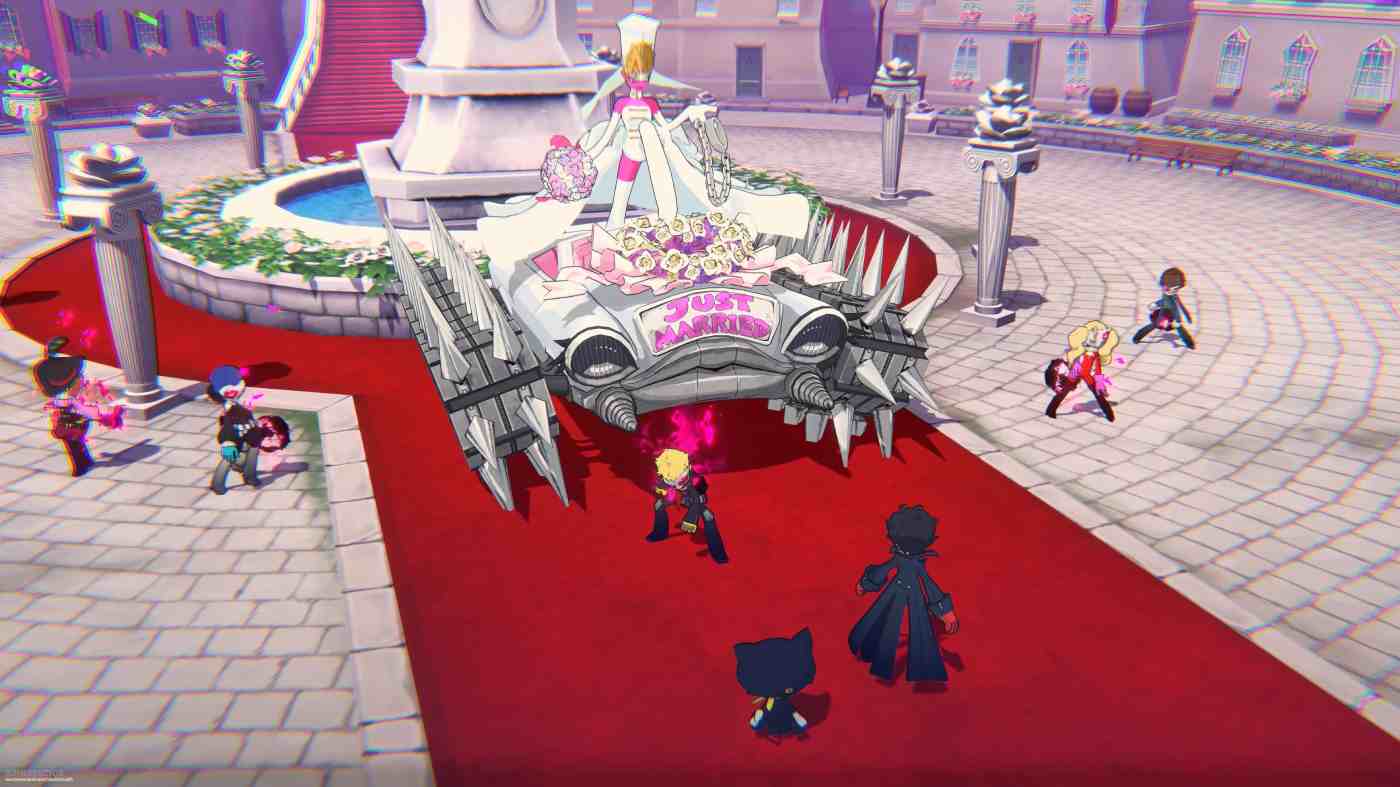
The variety and ideas presented here leave Tactica’s battles feeling more puzzle-based than anything else – which absolutely isn’t a bad thing. A vast majority of missions also include optional objectives, incentivising you to optimise the amount of turns you take to complete them while minimising loss of units in exchange for big experience gains. The battle system in its totality is best shown off in Tactica’s optional quests, which are bite-sized challenge missions that encourage you to think outside the box and make the most of the tools available to you.
Outside of battle, Persona 5 Tactica keeps things relatively slim but still meaningful in the things you engage with. Aside from levelling up as you gain experience, you’ll also gain GP that can be spent to upgrade skill trees. Each member has a couple of distinct trees to move down, each focusing on a different aspect of their kit. While there’s a good amount of room for experimentation, there’s some clear winners for each character to make them really efficient.
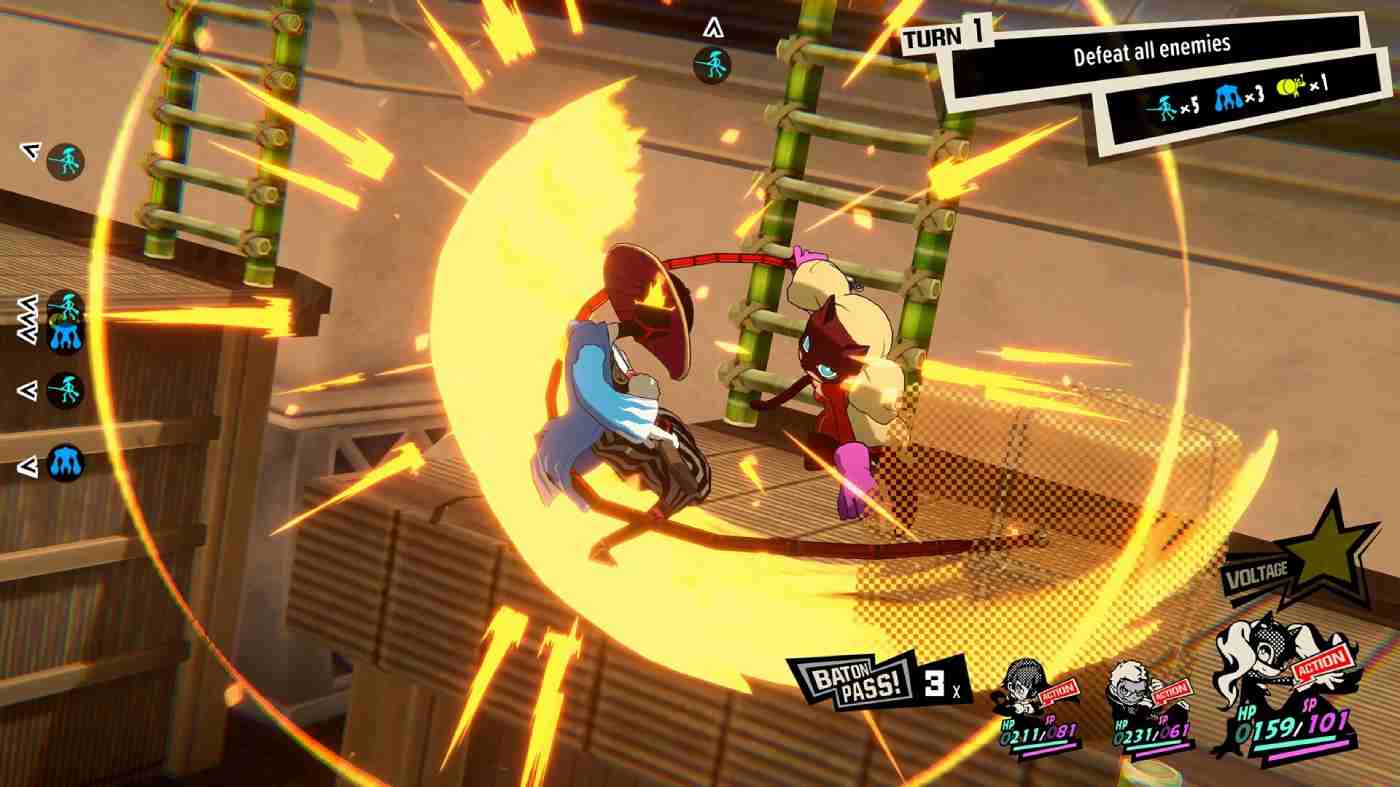
GP is gathered by general progression and character utilization, but you’ll also gain GP for participating in optional conversations at the hideout. These short character exchanges serve to flesh out the world, characters, and current happenings. Better yet, these conversations can be viewed at any point if you feel like you need catching up on particular details or narrative threads as you move through the roughly 20-hour story.
The other big component outside of battles is the Velvet Room. It simply wouldn’t be a Persona title without it, and the way it’s implemented in Tactica feels fitting. You’ll most often use it for Persona fusion, resulting in more powerful Persona that can then be equipped to your units to bolster their health and provide additional skills. You can also purchase new weapons, and even fuse Persona into weapons to imbue them with elements that add extra utility to your ranged attacks.
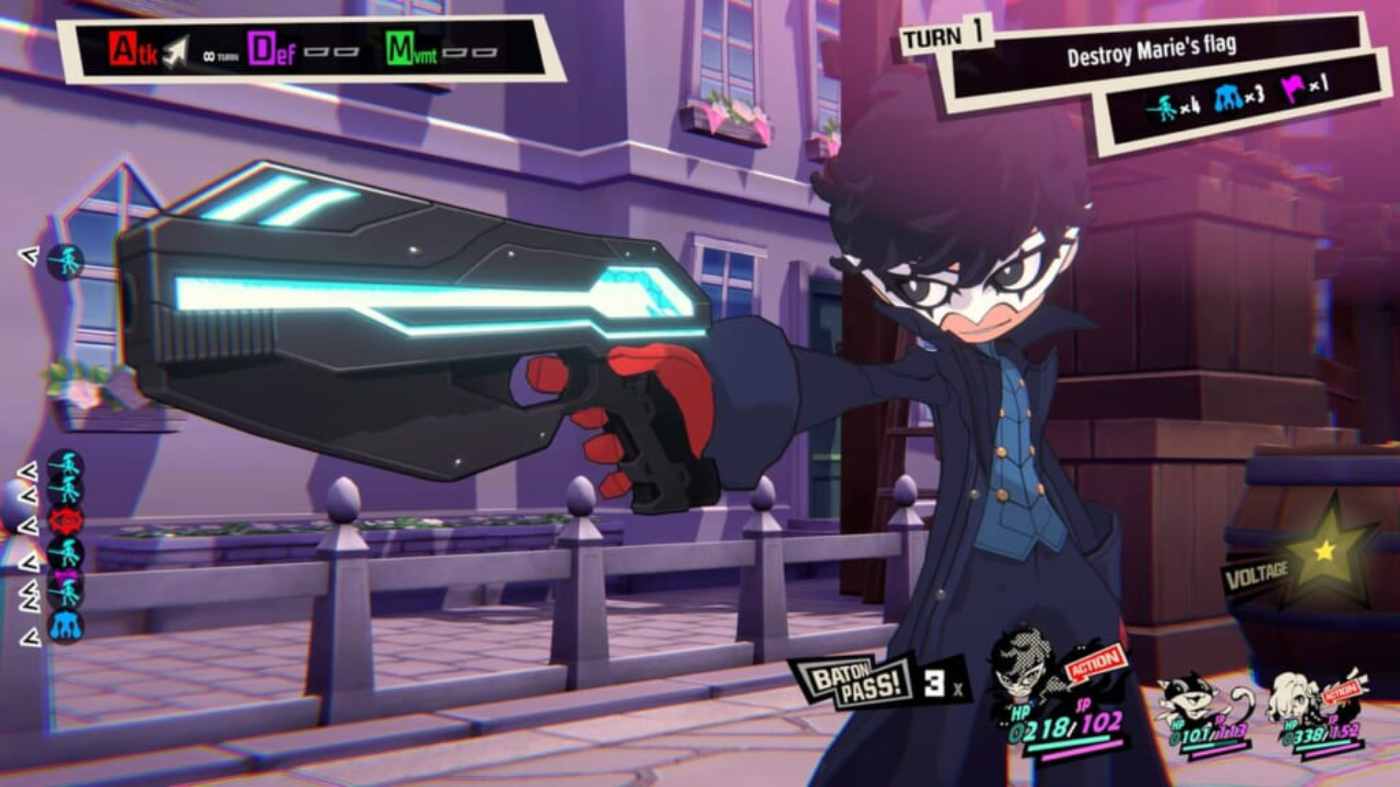
It all makes for a healthy degree of player customisation and expression between your units, and allows you to mix and match abilities and elements to further expand your options in combat. Persona can also be swapped between units at will, so you never feel locked-in when choosing where to use your most powerful fusion results. A limit of two abilities per Persona also means that you can’t create a busted build through strategic fusion, and serves as a great compromise between maintaining difficulty and giving you access to series mainstays.
I’d be lying if I said I wasn’t apprehensive about Persona 5 Tactica’s art style. While it maintains the slick and stylish UI of other Persona 5 projects (albeit on a smaller scale), I initially wasn’t onboard with the Chibi-esque nature of its character designs. I did come around relatively quickly, though, and found it charming and fitting for the type of game Tactica is trying to be. Its bold use of red runs deeper than just its links to Persona 5, tying into its deeper themes and aesthetic. The cutscenes and 2D visual novel-style exchanges are also presented in excellent fashion.
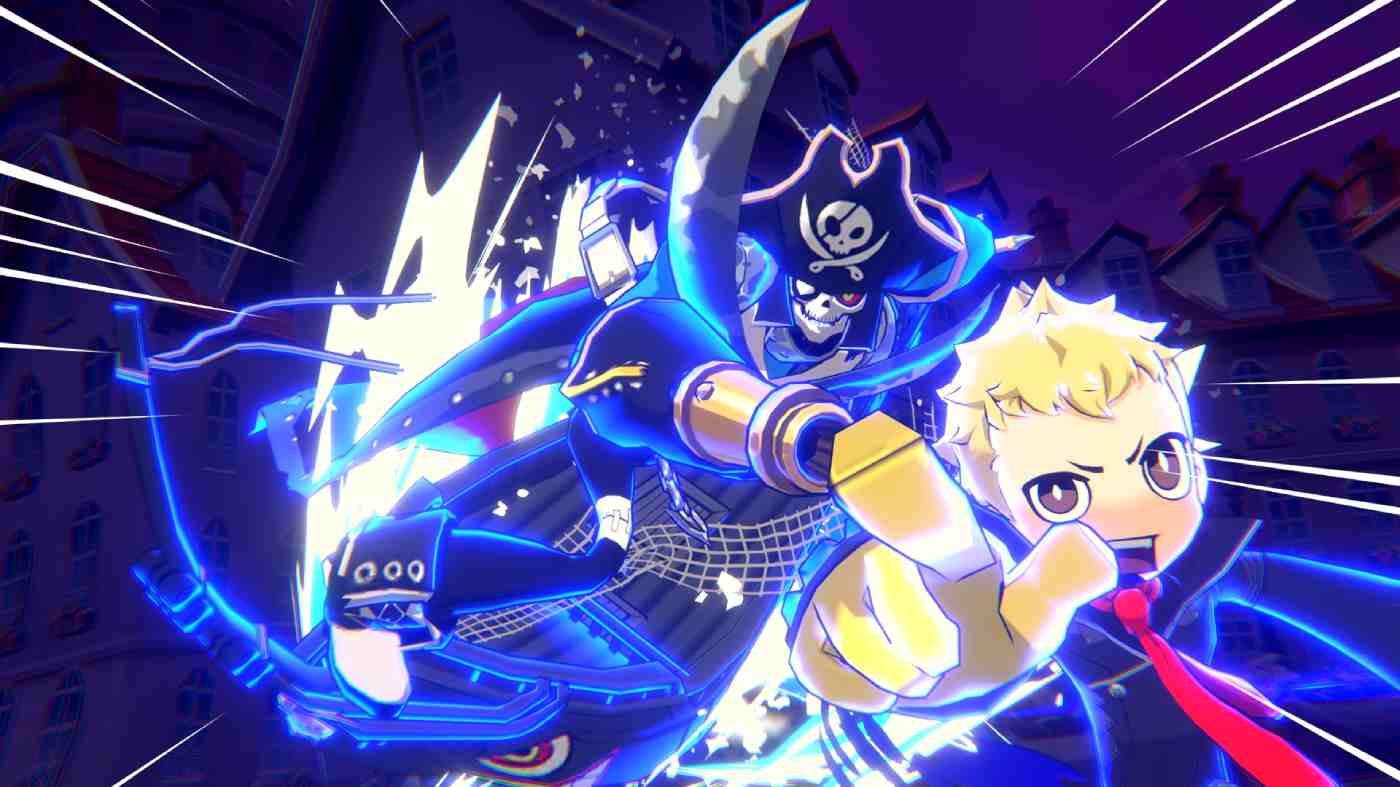
Its environments are also gorgeous, moody, and varied. Marie’s medieval-style Kingdom stands in stark contrast with later environments which explore other kinds of architecture. Perhaps more interesting is that these locations aren’t entirely new to what we’ve seen in the series before – even in Persona 5. Despite this, Tactica still manages to find new ways to bring these motifs to life in a fresh manner. While I can’t speak to other platforms, the Switch version runs remarkably well and serves as a fantastic way to play this kind of experience.


